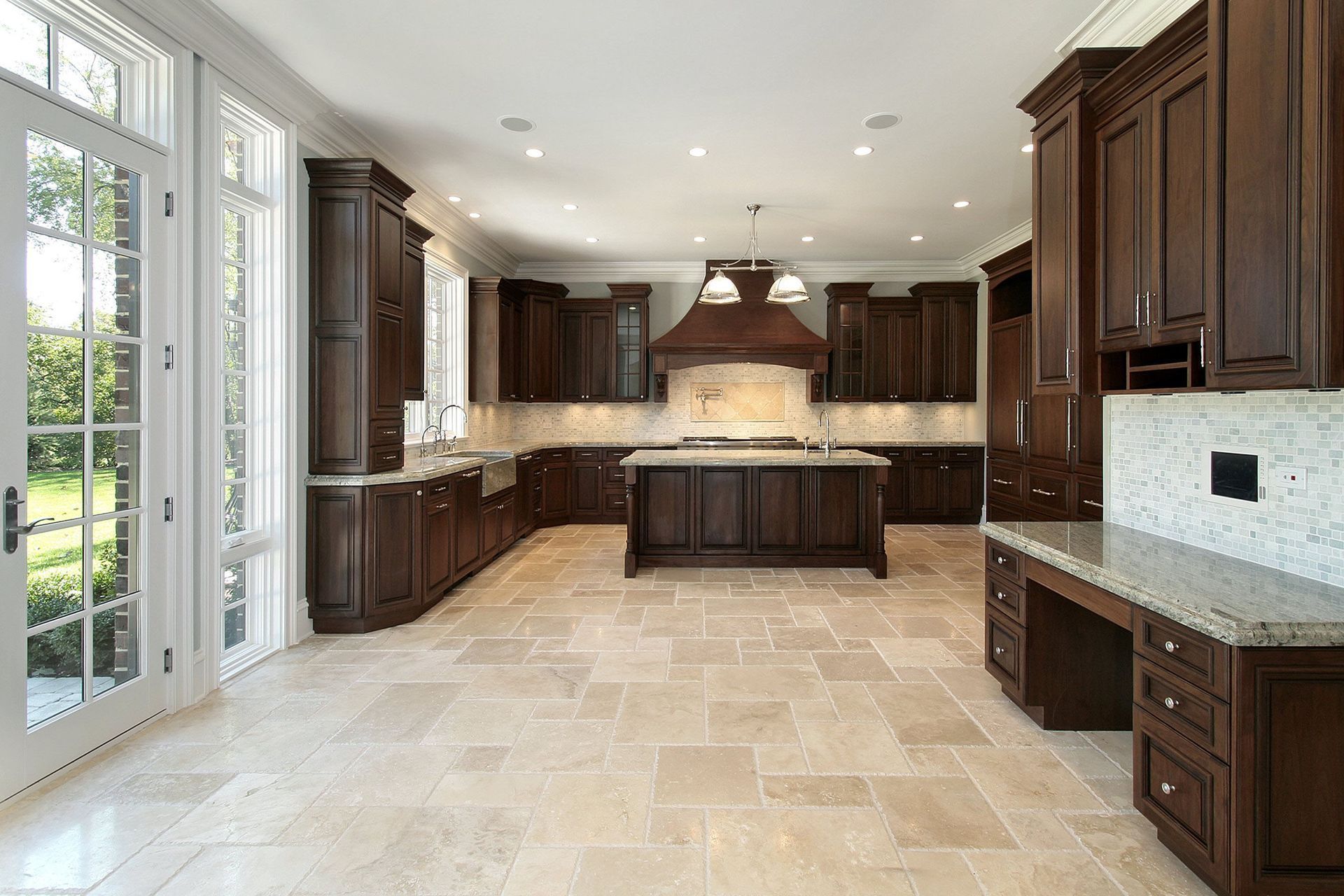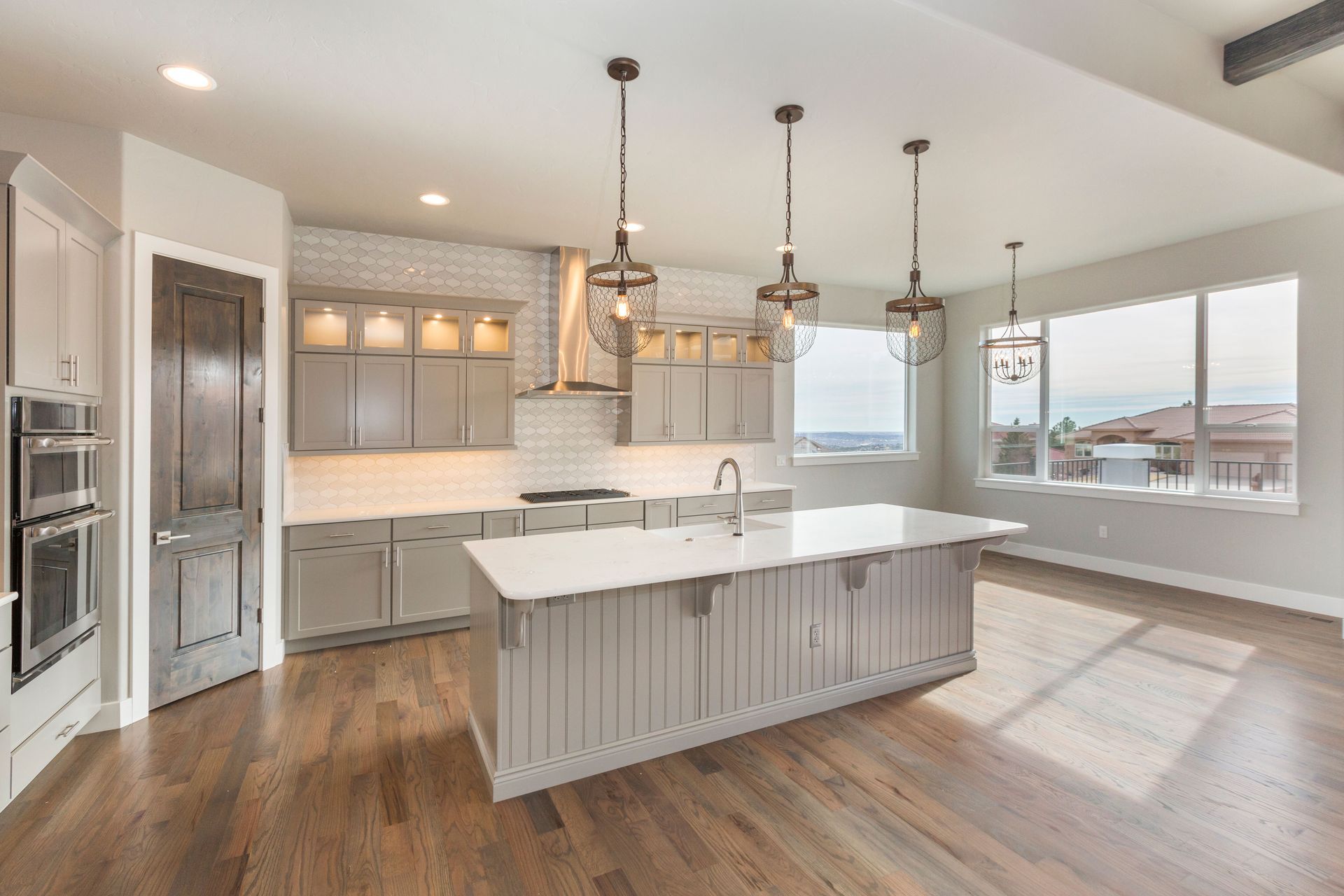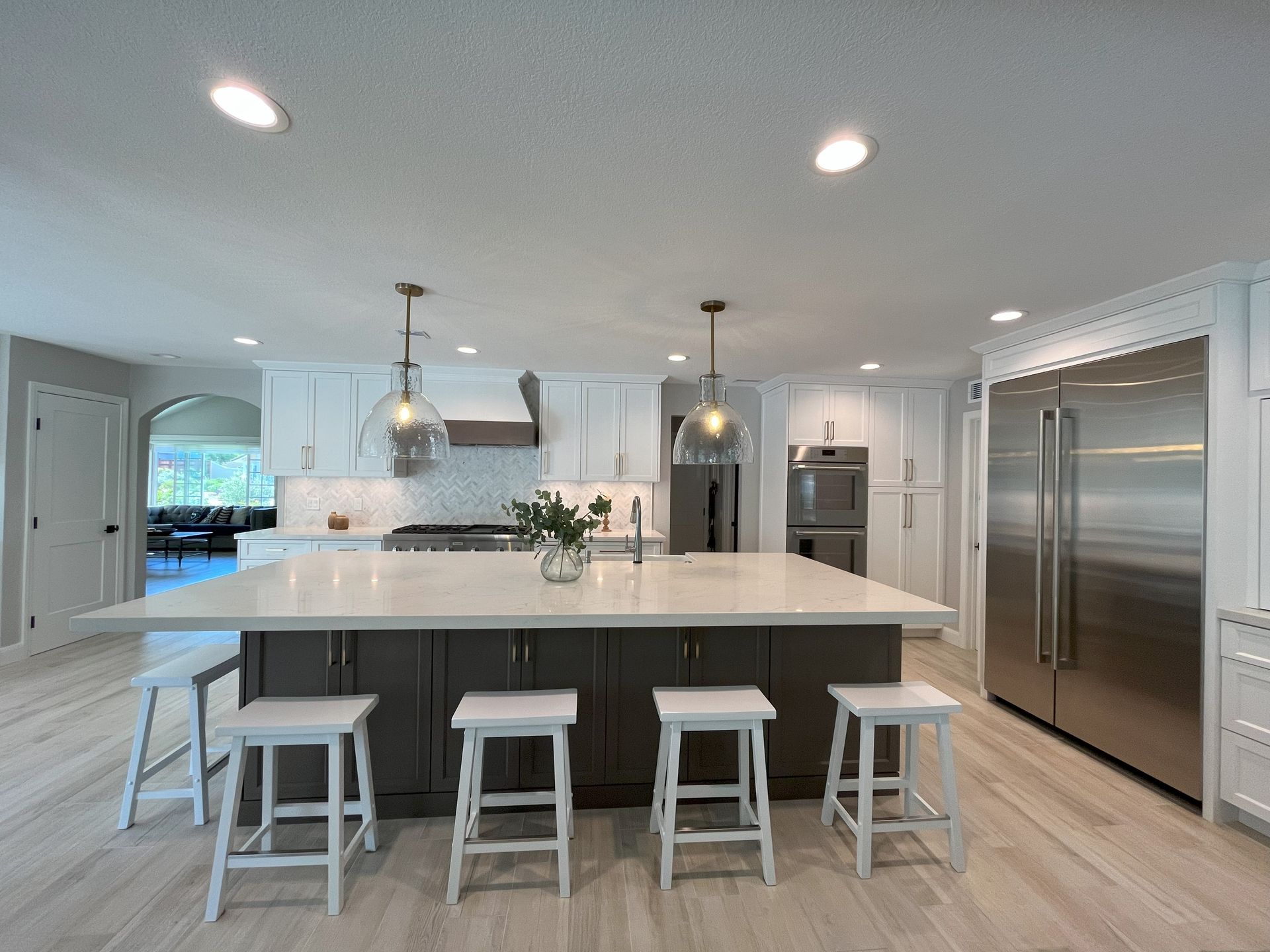August 7, 2025
The colors chosen for kitchen design play a crucial role in determining both the aesthetics and the functionality of the space. The psychology of color suggests that different tones can influence mood and perception, making the choice of color a critical component in home design. Classic colors remain popular for their versatility and ability to set a calming and inviting tone, while newer, bolder choices make statements about modern style and individuality. By exploring various color choices, homeowners can create spaces that reflect personal style while also enhancing the usability of the kitchen. This article will explore some of the most popular color choices in kitchen design, offering a detailed examination of each.
1. Classic White: The Timeless Elegance
White has long stood as a beacon of purity and simplicity in interior design, making it a consistent choice for kitchen decor. In fact, according to the 2025 US Houzz Kitchen Trends Study, white remains the top choice for many kitchen elements, including cabinets (33%), countertops (41% white; 23% off-white), and walls (26% off-white; 25% white). Throughout history, the appeal of white has been its ability to create a sense of cleanliness and spaciousness, even in smaller kitchens. The classic white kitchen exudes timeless elegance, integrating seamlessly into both traditional and contemporary home settings. From Victorian to modern minimalist designs, white continues to adapt and remain relevant across different kitchen styles.
The historical popularity of white in kitchens also stems from its ability to enhance natural light. White reflects light, brightening the space and making it feel larger and more open, which is especially beneficial in compact or windowless kitchens. This inherent brightness associated with white makes it an appealing choice for those looking to add light and airiness to their homes. Furthermore, white kitchens often evoke a sense of cleanliness and order, a desirable feature for a heavily used communal space like the kitchen. The reflective property of white surfaces amplifies both natural and artificial lighting, adding depth and dimension to kitchen areas.
Despite the advantages of white, maintaining its pristine appearance requires regular upkeep. Homeowners interested in white kitchens must consider the practicality of keeping surfaces clean and free from marks and stains. While some may see this as a drawback, others appreciate the challenge and believe it reinforces good cleaning habits. As design trends evolve, white kitchens continue to see innovative adaptations, incorporating technological advances in surface coatings to mitigate maintenance concerns. Looking forward, white's enduring relevance may hinge on how well it can adapt to sustainability efforts and practicality in the home.
2. Bold Black: The Chic and Modern Choice
In recent years, black has carved a niche in kitchen design as a chic and modern choice, symbolizing sophistication and luxury. Historically, black was often avoided due to assumptions it would make spaces feel smaller or overly stark. However, the right balance and application have seen black transform into a statement-making color, adding drama and modernity to homes. Black’s resurgence in popularity is aligned with a broader design movement toward minimalism, where simplicity and elegance supersede elaborate embellishments. Used strategically, black accents create a dramatic flair that enhances focal points and complements minimalist aesthetics in modern kitchens.
Black’s role in contemporary kitchens often becomes the defining aesthetic feature of a space, providing a sleek foundation for other decorative elements. Recent trends have seen black cabinetry, appliance finishes, or even whole countertops, showcasing a bold stylistic statement. High gloss finishes reflect light, enhancing the depth and dimension in kitchen designs, while matte finishes offer texture and sophistication. Black can artfully define cooking and eating areas, drawing eye-catching contrast when layered against neutral backdrops. This versatility in design embodies both modern luxury and classic refinement, elevating standard kitchen designs to high-end, fashion-forward spaces.
In keeping with its newfound popularity, black is often utilized to emphasize modern materials and industrial aesthetics. By juxtaposing sleek black surfaces with raw materials like steel or glass, kitchen designs explore themes of contemporary urbanity. Such designs appeal to those drawn to the modern industrial style, balancing sleek architecture with the rugged textures of concrete, metal, and stone. Moreover, black’s striking contrast with natural wood introduces organic warmth, creating a harmonious and visually compelling kitchen environment. As a result, black has effectively redefined what a contemporary kitchen looks like, enhancing it with a blend of innovation and classic style.
Black’s boldness allows for dramatic contrasts, transforming simple kitchens into sophisticated domains that exude confidence. Used as a focal color, black sets off lighter elements within the space, accentuating unique architectural features or interesting textural details. A common design strategy involves pairing deep black islands with white cabinetry, combining sharp contrasts that draw attention to symmetry and structure. This strategic use accentuates elegance and precision in design, converting kitchens into artful expressions of personal style. The strategic use of black in this manner also amplifies the presence of contrasting colors, enriching the kitchen’s overall aesthetic harmony.
3. Earthy Greens: Nature-Inspired Tranquility
Earthy green tones have emerged as a calming, nature-inspired choice in modern kitchen design, bringing the outdoors inside. Ranging from sage to olive and forest hues, these colors foster a sense of balance and renewal. As sustainability and wellness continue to influence interior design, green has become a powerful visual symbol of both. These tones echo organic textures and environments, helping to create kitchens that feel grounded and serene. Green’s association with freshness, vitality, and health also makes it particularly fitting for a space devoted to preparing and sharing meals.
Homeowners are increasingly turning to green for cabinetry and accent walls, using it as a soft departure from neutral palettes. Earthy greens complement a wide range of materials, such as wood, brass, and stone, allowing for flexible design schemes. When paired with natural elements, green creates warm, inviting kitchen environments that feel connected to the surrounding world. This alignment with nature promotes well-being and can contribute to a slower, more intentional lifestyle, which is something many homeowners seek in their kitchen spaces.
Earthy green tones thrive when complemented by organic textures and earthy finishes. Wood grain cabinetry, jute rugs, and stone countertops blend seamlessly with green, producing kitchens that feel tactile, layered, and authentic. These natural combinations introduce warmth without overwhelming the space, maintaining the airy and grounded quality that green provides. Brass fixtures, terracotta accents, and rattan light fixtures further emphasize the harmony between green and nature-inspired textures. The combination builds an approachable sophistication that appeals to both traditional and modern design tastes.
Designers often leverage the subtle depth of green to highlight cabinetry details, trim work, or architectural features that may be lost in stark white or black settings. With green acting as a muted yet distinct base color, other design elements, such as open shelving, patterned tiles, or butcher block counters, can shine without competing visually. In essence, green acts as a bridge between bold statement and understated elegance, adding richness to kitchens while preserving a timeless appeal.
Color plays a pivotal role in shaping the feel and function of a kitchen, offering homeowners the opportunity to express their personality while optimizing their kitchen design . Classic white continues to offer timeless elegance and versatility, while bold black introduces drama and modern flair. Earthy greens, on the other hand, bridge aesthetics and wellness, reflecting a growing desire for calming, nature-infused interiors. Each color brings its own strengths, challenges, and opportunities for customization. By understanding how these colors affect mood, space, and maintenance, you can make thoughtful choices when working with Superior Kitchen & Bath, Inc that support both style and daily use. Give us a call today to get started with a free consultation!








